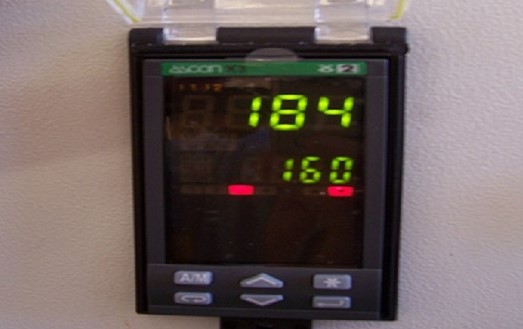Many chemicals require to be stored within certain temperature parameters, with a minimum temperature and a maximum temperature that they can be stored at. If the temperature goes outside the assigned minimum OR maximum parameters, the chemical will be adversely affected and may be no longer usable or worse still, may become volatile and dangerous. Details on the temperatures that each of your chemicals can be stored at can be found in their MSDS (material safety data sheet). You should also consult your chemical supplier for further advice.

Chemicals Which Cannot Be Subject to Low Temperatures
In low temperatures, some chemicals will freeze causing the containers to split or crack and creating leaks and pollution. When handling hazardous chemicals, it is vital that you are aware of its flash point. Flash point refers to the lowest temperature a chemical can be stored in before chemical vapours are released into the air and can catch on fire.
If the chemical reaches its flash point (the lowest temperature it can be stored in) the chemicals in the air just above the liquid will ignite. Flash point is generally used to distinguish flammable from combustible and non-combustible chemicals. Flammable liquids have a flash point below 37.8C, meaning they can catch on fire in normal working temperatures. Some examples of flammable liquids are as follows:
- alcohols – methanol, ethanol
- esters – ethyl acetate
- ethers – diethyl ether
- ketones – acetone, cyclohexane
Chemicals Which Cannot Be Subject to High Temperatures
High temperatures can also pose a problem. Whereas flammable chemicals will ignite when the temperature drops too low, combustible liquids catch fire when the temperatures are too high. Combustible chemicals have a flash point above 37.8C and cannot be stored with flammable liquids. Although combustible chemicals can generally be stored at room temperature, they are just as dangerous as flammable liquids.
Combustible chemicals should never be stored in a high temperature environment. Storing combustible liquids in areas with high heat puts pressure within the containers, causing them to crack and split open. If these chemicals are released into a high temperature environment a chemical fire is likely to happen. Some examples of combustible chemicals are:
- acetic acid (CA)
- cumene
- phenol (CA, T)
- propionic acid (CA)
Temperature Controlled Chemical Storage Solutions
To ensure your safety from a chemical fire, it’s important to understand the optimum temperature at which chemicals can be stored and make the appropriate storage considerations.
If your chemicals are sensitive to low temperatures, you will need to store them in a temperature controlled chemical storage unit. This can be a temperature controlled chemical store with frost protection only, provided by heaters or air warmers. If you are storing combustible chemicals which cannot be stored in high temperatures, then you will need a chemical store with full temperature-controlled storage providing both heating and cooling.
Temperature-controlled chemical stores allow you to pre-set the required temperature within the store. A log should be always be kept with an ongoing record of the temperature within the chemical store.
Further temperature controlled chemical storage can also be provided by using equipment such as heating jackets to warm the contents of Drums and IBC’s to prevent freezing. If you require a cooling mechanism, extractor fans can be used as a means of chemical temperature control too.
At Safety Storage Systems we offer a range of temperature-controlled storage units that can be customised to suit your individual chemical storage needs. Learn more about our temperature-controlled chemical storage units here.